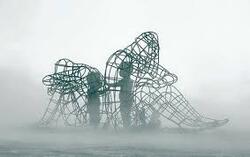|
It's December 2019 and most of us are in full planning mode. In addition to planning for our holiday, we often find ourselves thinking about this past year. Maybe you have fond memories of great experiences. Maybe you are in awe of all the goals you set and smashed. Perhaps you are establishing goals for 2020 or, like most people, thinking about what you could have done differently in 2019. Studies show that only 8 percent of the population achieve their new year resolutions. Furthermore, additional research suggests that fewer than 3 percent of the population set goals regularly. There are many articles that give concrete tips on ways to set, be consistent with and achieve goals. However, I firmly believe that most of us miss 1 thing when thinking about what we want to do and how we want to do it: our shadow. Our goals are lofty, play up to our greatest perceptions of who we want to be and negate those parts of us that we don't really like.
1 Comment
 The holiday season brings up emotions for many of us. For some, those emotions are linked to fond memories of time spent with family. Maybe you think of food, gifts or the quality time. Maybe the holidays make you smile with excitement. For others, the holiday season feels dreadful. You are not looking forward to it, you do not have fond memories and your only excitement is the thought of it being over. No matter which reaction you have, this time of the year likely brings out your inner child and depending on what your childhood was like, you may need to take extra care of yourself in the next few months. Your inner child is the child-like part of you. The vulnerable, innocent part of you that has visceral, automatic, reactions to things that you can’t explain. It is the part of you that requires extra care and consideration. For those of us that have traumatic experiences, our inner child can be a part of us that responds to hurt. It is the part of us that sometimes feel frozen in time, with limited skills to manage challenging situations. It’s the part of you that throws tantrums, does not want to communicate what you need and recoils at the idea of the pain. It’s that part of you that does not know what to do and it seems that your logical brain has shut off. In healing work, the inner child is essential because it is the part of you that requires the most care as you seek to shift behavior patterns.
This time of the year seems to be the most sensitive time for a lot of people. We are inundated with movies, commercials, tv shows and conversations about family. The messaging and pressure of what “should be” is ever present. You “should” have good memories and traditions. You “should” have a place you call “home” and people to see. You “should” be able to give and expect gifts from others. This “should” be the most magical time of the year. PAIN. It is the number one reason why people come to therapy. Whether it is from feeling sad or anxious, remembering a traumatic experience or a heartbreak; everyone comes in to treatment wanting the pain to go away. “When will it stop?” “I never want to feel this way again!” “Why is this happening to me?” These are all common sentiments that clients express when describing what they want from therapy. My response is always the same and always met with the side eye: “what if you could welcome the pain?” There are few things in life that are certain and the fact that you will feel pain is one of them. If you heard me on the TFBG Podcast Episode98: ‘Showing up When You Want to Lay Down,’ you will hear Dr. Joy and I talk about pain and how to use the PACT (Plan, Acknowledge, Compartmentalize, Time) method to be able to manage having painful experiences when you still have real-life responsibilities. If you haven’t heard it, check it out. In this blog, I want to give you another idea. I hope to encourage you to consider that instead of running from pain we can welcome it, understand why it shows up for us and use it to learn what we need to do to take care of ourselves.
Pain is important. Without pain we would not know when there are things that are hurting us. When you do not know what is hurting you, you will continue to engage with it until the damage that it is causing is irreparable. Let’s think about fire. One of the earliest lessons that we learn as children is that fire burns. We are told that and some of us have the experience of getting close to fire, feeling the heat or maybe even feeling a little burn and so we know not to get too close and certainly we don’t put our whole hand in it and just keep it there. What is my purpose? Most of us want to know what we were placed here to do, what are our intrinsic gifts and talents and how are we meant to use them in our lives. For those of us who feel called to a specific purpose, we often wonder if our purpose can be the way we make our living. We yearn to understand, especially when we are early in our journey, how this “thing” fits into the bigger picture of our life and if we have the bandwidth to do “it” and have the success that we want; could our passion even be the vehicle for our success. Is it possible to have both?
Purpose & Passion Defining a life’s passion or purpose is a very individual process. For some people it is rooted in the things that they are good at doing; for others it is what they love to do. These two things are not always the same. However, if we were to find what Samara Stone, branding expert and business coach, defines as the “sweet spot,” we’d be connecting ourselves to the things that we love to do and that we can do with relative ease. As ideal as this sounds, I find that it is the very thing that most people shy away from. The idea that what you seek is actually already present and that the journey to “that thing” is not that hard is a baffling concept. Most of us have things in our life that we LOVE to do; it is the thing you find yourself doing in your free time, the thing you dreamed about doing as a child and you still dream about doing. Over time, somehow we have internalized that this CAN’T be it. It doesn’t make sense for your life. It’s too easy, too simple, not grand enough or you feel like there must be some external validation to confirm your interests. It's no secret that we live in a society that where trends are temporary. In truth, things are more cyclical than temporary. We seem to be interested in things in waves. Fashion tends to cycle every 20 or 30 years. Who would've thought fanny packs and multi-colored attire would've been back in style? Maybe those who were around to see the evolution of hi-top fade. If you look closely enough you'd find the same trend in music and other socio-cultural phenomena.
|
Archives
June 2024
|





 RSS Feed
RSS Feed